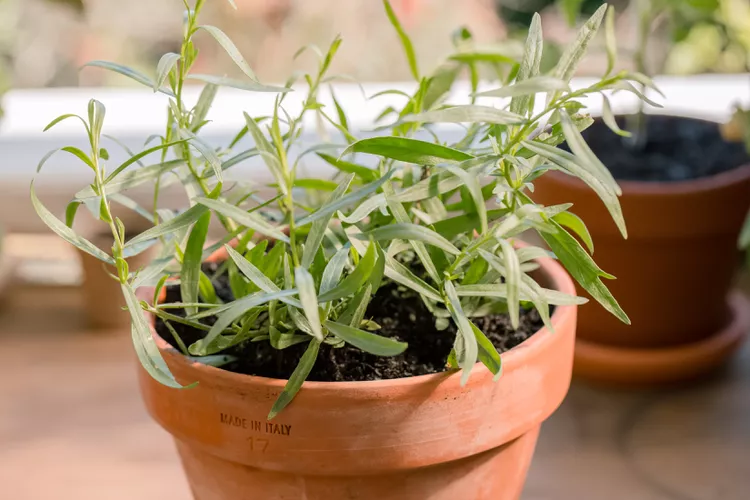
Description
You might be shocked to hear that tarragon, often referred to as estragon, is a perennial herb that belongs to the sunflower family. Tarragon has narrow branches and grows to a height. The leaves are glossy green, lanceolate, and measure 2–8 cm in length and 2–10 mm in width. The edge is complete. Small capitula measuring 2-4 mm in diameter are used to generate the flowers, and each capitulum can hold up to 40 yellow or greenish-yellow florets. But flowers (or seeds) are rarely produced by French tarragon.
Habitat
Native to milder parts of Europe is tarragon. It grows well in well-drained soil in a sunny or partially shady position since it is hardy. It does not do well in extremely hot areas and does best in spring weather.
Uses
Tarragon is used to treat dyspepsia, poor appetite, post-operative nausea and vomiting, toothaches, and sleep issues.

Varieties
Actually, there are two varieties of tarragon. Compared to the Russian variant, the French one tastes stronger and is more widely available. We will be focusing our recommendations on the French variety (subspecies Sativa).
Plant Care
- Light
Unlike many other plants, French tarragon dislikes direct sunlight in warm areas. If you don’t live in an extremely hot climate, full sun is acceptable; otherwise, choose a location that will only receive dappled or early morning sun. This plant thrives in settings that are warm rather than extremely hot.
- Soil
Tarragon is not fond of damp weather. This herb can withstand drought and grows best in light, sandy, well-drained soil. Poor growth, rotten roots, and diminished flavor are the outcomes of rich, acidic, and wet soil.
- Water
For best results, water young tarragon on alternate days if you’re having extended hot, dry spells. A light watering every few days should be sufficient for mature tarragon, though. Examine the top inch of soil prior to applying water. Give it a drink if it’s dry; if it’s moist, there’s no need to water it.
Although they can survive in dry soil, it’s important to avoid overwatering them since this can reduce their development and flavor intensity. While tarragon can thrive without much water, excessive dryness might hinder the growth of the leaves.
- Humidity and Temperature
This hardy plant doesn’t mind the occasional dip in temperature. In the event of a cold snap, it can still grow. The biggest problem with tarragon is that it is not tolerant of extreme heat, direct sunlight, or high humidity.
It’s advisable to cover the plant with mulch in extremely cold weather during the winter to help shield the roots as it dies back and enters dormant.
- Fertilizer
Fertilizer is not necessary for tarragon to thrive. Low-nutrient soil yields the finest flavor when cultivated in it. If you do use some, you should only use an all-purpose type when planting for the first time.
Table





